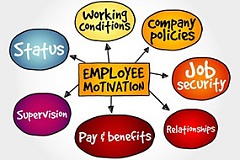 No one plans to work forever. Every business owner knows the time will come when they want to step down, step back, or step aside and let someone else take over the day-to-day running of their company.
No one plans to work forever. Every business owner knows the time will come when they want to step down, step back, or step aside and let someone else take over the day-to-day running of their company.
Research by the Exit Planning Institute shows 66 percent of the current American business market is owned by Baby Boomers. These people typically plan to retire and transition their businesses during the next 10 years, which usually means selling or handing over the reins to someone else. Often, this happens in response to an unexpected life event that forces them to retire or sell.
To ensure any exit happens on your terms, now is the time to start preparing for your departure and getting your company ready for any eventuality.
The Risks of Unreadiness
Statistics also show that only 23 percent to less than 30 percent of businesses that go to market will ever sell.
This leaves up to 80 percent of those without ways to harvest their wealth and ensure economic continuity into the next generation.
An owner who is “ready” with an attractive business has a much better prospect of selling the company or successfully transitioning to new management.
Here are some of the circumstances we see in businesses that are unready or ill prepared:
- Planning late in the game results in not enough time to position a company for transition, minimize taxes, or maximize net profits. The result is owners get a much lower price for the business than expected.
- Business owners are unprepared when an unexpected event forces them into an early exit, or they get an offer from a buyer. In either situation, their lack of readiness prevents them from realizing the full value of their business – if they can even sell it.
- A sale falls through because the business fails to pass a third-party buyer’s due diligence tests.
- The owner is too involved in day-to-day operations, and the business can’t run without them. When the owner leaves, the business leaves with them.
- An internal buyout becomes unfeasible because the company is undercapitalized or doesn’t have enough cash flow to succeed without a cash injection.
To achieve the level of company readiness you need to avoid these scenarios, business owners must start developing their exit plan without delay.
Exit Plan vs. Succession Plan
It’s easy to confuse an exit plan with a succession plan. Many people believe they are the same and use the terms interchangeably. In practice, exit and succession planning are quite different.
In the context of business ownership, a succession plan is the process of identifying, training, and transferring leadership to another person or team. You might remain board chair, president, or primary shareholder; you’re likely to retain ties with the company in some form.
On the other hand, exit planning is when you sell and transfer the ownership of a company to a completely different party with the intention of permanently ending your involvement. Whether you’re planning to retire or to sell (or both) – and even if any thoughts of retirement are way in the future – the reasons for having an exit plan include the following:
- Improving your company’s readiness,
- Attracting the right investors,
- Getting the correct value for your business,
- Establishing financial security for your future,
- Building a legacy for future generations,
- Protecting your assets for your family’s benefit, and
- Achieving the exit experience you want.
Developing your exit plan should begin several years before you want to hand over ownership. This gives you time to establish the company’s reputation and status as a desirable acquisition, build up interest, and deliver reassurance that any changes you make have been fully integrated into the running of the company.
Identify, Eliminate Weak Areas: It pays off now and, in the future,
To develop a successful transition plan, you need to focus on maximizing the overall value of your business, while making provision to get the amount you need to support your future lifestyle or ambitions. The best way to optimize value is integrating preparation for the exit into day-to-day operations.
There is a sound reason to begin this process immediately: What you do today to make your business a highly saleable and valuable company tomorrow also makes you proud and more prosperous today. For example, you’ll:
- Grow strategically, giving you the capacity to expand faster if that is your goal with the people and the financial wherewithal to fund growth.
- Improve your profitability so you can reinvest in your business or take more out of your business today, and in future years take out even more.
- Get control over your calendar and have more time for fun and your family. Taking time off becomes easy because you have confidence your team is running your company well.
Get a business valuation
It’s essential to start by identifying what you have. There are three main business valuation methods you can use to determine the value of your business:
- An asset-based approach,
- An earnings-value approach, or
- A market-value approach.
Unless you are exceptionally knowledgeable about business valuations, getting a professional valuation is advisable.
Set exit objectives
It doesn’t matter whether you are planning to leave yet or not; you should decide now what you need to get out of your business if and when you do make a move. Doing so will protect you from the risk of losing what you’ve built when something unexpected happens.
Decide what your retirement or departure goals are. Ask yourself these questions:
- What will you do?
- How much money will you need?
- How long do you have to achieve the transition?
- What method will you prefer?
Remember, you can always revise this plan later if, say, you’re currently 40 years old and have no plans to leave for a long time. You should still prepare for an unexpected departure, and you can revisit and update the plan in five or ten years.
Increase company value
When you know the gap between your current business value and what you’d like to get if you sell, you can develop a strategy to bridge it over a specific period. Enhancing value requires you to increase profitability, cash flow, and efficiency. Your strategy should include the following:
- Implementing reliable financial controls. These are critical to convincing potential buyers that your valuation is valid. Interested parties must be able to see evidence of stability that includes past financial records and a sound balance sheet.
- Ensuring capital access. Buyers look for companies that have (or can get) capital funding. To ensure this, develop a sound relationship with your financial institution. Work to improve the company’s credit standing or ensure you can comply with requirements for funding applications.
- Diversifying your customer base. Customers are a crucial aspect of company value. Analyze your client base, calculate repeat business percentages, and identify your customer retention rate. Consider whether your target market is too narrow. This poses a risk if an event such as a natural disaster impacts your audience. Develop a strategy to broaden your horizons and increase your reach.
- Creating a proven growth strategy. To improve company value, you need a long-term strategic vision and forecast that considers industry dynamics, product development, expansion plans, and marketing tactics.
- Building a sustainable cash flow. Few buyers will pay top dollar for a company that struggles to cover its regular bills. Strengthen your cash flow in the long term by re-examining and reducing expenses, tighter inventory management, eliminating waste, minimizing bad debts, and implementing electronic payment methods that are more secure and cost less.
- Developing a stable workforce. Company value relies heavily on an organization’s ability to hire and retain talented employees. Potential buyers will want loyal staff with long-term records and career paths that ensure they will stay on after a change in ownership.
These factors will prove to potential buyers that the company is well-managed, forward-thinking, and has a bright future.
How Do You Do All This?
Step one is to book a call with me: Chris Dekle 770.888.1663 Main Email Me
We have the tools and programs to guide you, step by step through the process. We identify where you are now and the areas we need to focus on first, then second; then we create a custom tailored plan to take you from start to finish. Our team will bring in or recommend specialists at the appropriate times during the process so you have a company that investors clamor to buy when you decide to step away.
Start Your Exit Planning Now
It’s never too early to begin planning for a potential departure. If the worst happens, your company will be ready to change hands at a profit and continue operating successfully under new management.
In the best-case scenario, you’ll build it up to be a successful enterprise with the highest possible value and revise your exit strategy repeatedly before you sell.
Either way, optimizing your value with your eventual exit in mind gives you the best chance of reaping the benefit of your hard work – no matter when that time comes.
Resources:
- https://www.forbes.com/sites/forbesfinancecouncil/2021/03/05/how-to-increase-your-companys-value/
- https://www.exitplanning.com/blog/succession-planning-vs-exit-planning
- https://forecastadvisors.com/exit-planning/succession-planning-vs-exit-planning/
- https://exit-planning-institute.org/state-of-owner-readiness/
- https://edwardlowe.org/how-to-create-an-exit-strategy/
- https://www.bdc.ca/en/articles-tools/change-ownership/plan-succession/family-succession-4-common-exit-strategies
- https://www.allbusiness.com/business-exit-strategy-business-plan-119617-1.html
- https://www.uschamber.com/co/start/strategy/business-exit-plan
- https://www.tonyrobbins.com/business/exit-strategy/
- Exit Planning Institute: The State Of Owner Readiness 2018 Georgia Report














